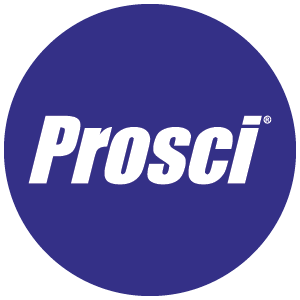The Difference Between Change Management vs. Change Leadership

5 Mins
Updated: October 30, 2025
Published: June 10, 2025

Do you know the difference between change management and change leadership? Despite their similarities, they differ in fundamental ways. While change management and change leadership are both valuable, understanding the differences between these concepts is critical to your success in driving change. This article explains the differences between change management and change leadership, when to use each, and the impact they have on organizations.
What is Change Management vs. Change Leadership?
Change is about moving to a future state, and change management and change leadership help drive the process of transitioning from the current state to the future one. Here’s how to distinguish between change management and change leadership.
- Change management focuses on the people side of change. It’s primarily concerned with the processes, tools, and techniques that support individuals affected by the change. Change management involves planning, effective communication, leveraging coalitions, and strategies to mitigate resistance while maintaining stability during periods of transition.
- Change leadership emphasizes setting a vision and direction for the change, and inspiring or influencing people to adopt and embrace it. Successful change leaders drive transformation, motivate teams, and lead change by shaping culture and guiding people through uncertainty.
Both change management and change leadership support employees impacted by change; however, the former is process- and tool-driven, whereas the latter is vision-driven.
Key Differences Between Change Management vs. Change Leadership
Let’s examine change management and change leadership in more detail to understand the differences between them.
Purpose and approach
The purpose of following a change management approach is to implement changes in a specific and structured way while focusing on the people side of change. Organizations use change management for workforce transformations. In comparison, the purpose of change leadership is to inspire and drive broad, vision-driven, and strategic changes. While change leaders inspire and influence people to embrace change, they are typically focused on promoting a broader strategy or vision rather than a specific change initiative.
Methods and techniques
Change management methodologies, like the Prosci Methodology, follow a structured approach to change with measurable milestones. Additionally, they provide tools, processes, and plans to support the successful implementation of change. On the other hand, change leadership is centered around theories that empower people, model behaviors, and encourage innovation and creativity.
Stakeholder engagement
Change management involves defined roles, including change practitioners, sponsors, and people managers, each responsible for specific tasks that contribute to the success of the change. These roles ensure accountability and clarity throughout the change process. In change leadership, a change leader acts as a role model and primarily influences the employee stakeholder group to follow their lead.
Impact on organizational culture
Finally, change management focuses on behavioral changes that impact the day-to-day of affected employee groups. It can help sustain company culture through periods of change and uncertainty, and without change management, morale and employee engagement can suffer. Change leadership drives long-term shifts in mindsets, values, and the cultural identity of an organization.
Change Management vs. Change Leadership Theories
Several change management and change leadership theories have been developed to help organizations successfully navigate change. Change management models provide specific tools and frameworks for guiding change, whereas change leadership theories support the emotional journey individuals move through. Below are some of the common change management models and change leadership theories.
Change management models
- Kotter’s 8-Step Change Model: John Kotter’s 8-step change model offers a conceptual framework for managing change through a top-down approach designed to create urgency and build momentum. It provides a high-level, step-by-step framework for leaders to follow.
- Lewin’s Change Management Model: Kurt Lewin’s Change Management Model is a simple approach and one of the earliest in change management. Lewin’s Change Theory is structured into three phases: Unfreeze, Change, and Refreeze. This model provides a straightforward plan to guide simple business transitions.
- Prosci ADKAR® Model: The Prosci ADKAR Model is one of two foundational models of the Prosci Methodology. The Prosci Methodology is a structured, adaptable and repeatable approach based on 25 years of research that harnesses the power of the people side of change. Our model helps businesses facilitate change at the individual level to drive organizational change success.
Change leadership theories
- Transformational Leadership Theory: Transformational leadership is a leadership theory designed to influence individual and social system change. Leaders inspire and motivate employees (or followers) to achieve a shared vision for the collective good, leading to positive organizational change.
- Bridges Transition Model: Created by William Bridges, the Bridges Transition Model focuses on the individual emotional journey during organizational change. It identifies three main phases: Ending, Neutral Zone, and New Beginning. Change leaders use this model to anticipate and address the diverse needs of various employee groups during a transition.
When to Use Change Management vs. Change Leadership for Organizational Change
If you’re unsure when to use change management versus change leadership, these best practices can help you decide.
When you need processes, tools, and techniques to manage the people side of well-defined change initiatives, you need change management. Change management follows a structured process for driving organizational change, such as the Prosci 3-Phase Process, which includes preparing for change, managing change, and sustaining outcomes. Additionally, a key component of change management is addressing resistance.
Change leadership works well when navigating complex, undefined, and transformational changes. It allows leaders to inspire innovation and communicate an organization’s long-term vision for lasting impact.
Importance and Impact of Change Management and Change Leadership on Successful Change
Despite their differences, change management and change leadership can have a positive and lasting impact on your organization.
Empower teams with change management skills
Change management helps teams:
- Implement changes smoothly and close the gap between requirements and results
- Minimize and address resistance to ensure change success
- Enhance efficiency and reduce operational risks
- Increase the likelihood of project success by 7x, according to Prosci research
The Correlation of Change Management Effectiveness with Meeting Project Objectives

Manage change with change leadership skills
Change leadership helps companies:
- Build resilient organizational cultures
- Drive strategic growth and long-term success
- Inspire and empower employees to pursue their organization’s vision with a positive mindset
Challenges and Considerations in Change Management and Change Leadership
Leading your organization through successful change, even with a structured change management approach, is never easy. Change practitioners need to be aware of common obstacles to success, including:
- Lack of stakeholder buy-in: Participants in Prosci's Best Practices in Change Management research indicated that many executives don't understand their role in change management, the resources required, or the purpose of the change. This misunderstanding leads to inconsistent communication, visibility and transparency within the organization. To overcome this challenge, change practitioners must help sponsors build effective sponsor coalitions.
- Lack of communication: Without effective communication—that which is transparent, fosters awareness, and aligns with organizational goals—confusion and misalignment become issues for groups impacted by the change.
- Resistance to change: Resistance is strongly linked to impacted people and groups not understanding the business reasons for a change. That’s why creating buy-in for the change is a key step in any successful change management initiative.
Change leadership also presents unique challenges, including:
- Inspiring change amidst uncertainty: Leaders must motivate teams despite ambiguous outcomes and shifting conditions, which requires confidence, clarity, and emotional resilience. Serving as a successful change leader requires extensive leadership development and practice.
- Balancing vision with practical execution: While articulating a bold and transformative vision is essential, leaders must also ground it in actionable steps that align with available resources, realistic timelines, and the organization's culture.
Integrating Change Management and Change Leadership
Integrating change management and change leadership involves striking a balance between structured processes and casting a vision. Organizations need structured change management approaches to guide change effectively, as well as leaders who can inspire and adapt in dynamic environments. By developing individuals who can both manage the people side of change and inspire people through transformation as they lead change, companies build resilience and organizational change capability.
Change Management vs. Change Leadership: A Unified Approach
Understanding the distinction between change management and change leadership is essential for driving successful transformation. Change is inevitable, but with the right approach, it is always an opportunity, never a crisis.




